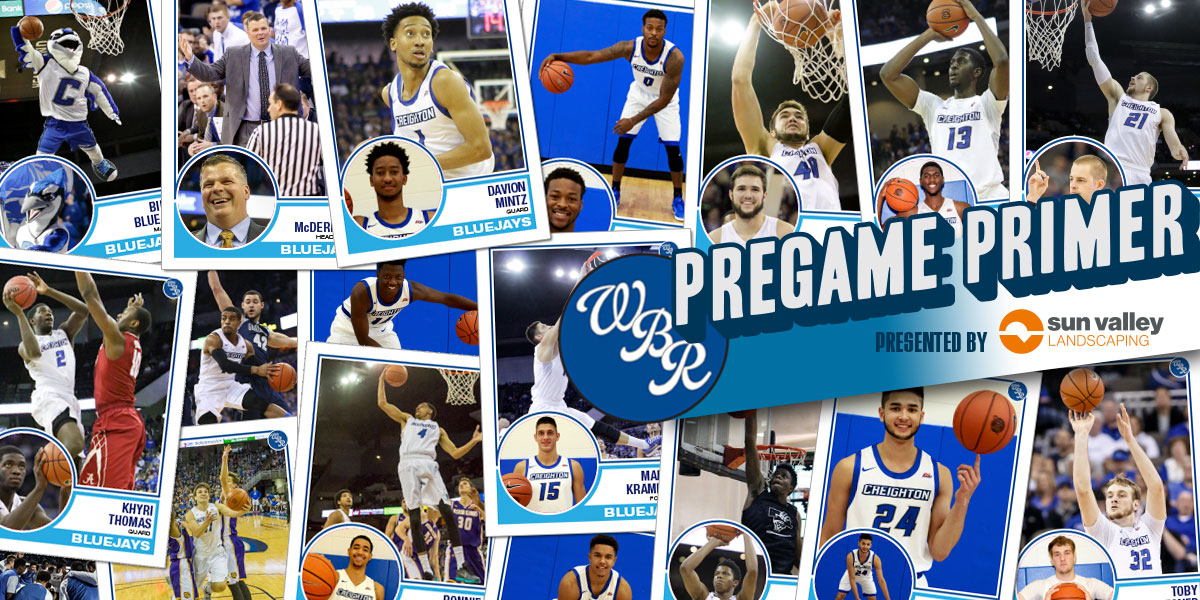 Friday afternoon, Creighton makes it’s 20th appearance in the NCAA Tournament, and first since 2014. Their opponent is the Rhode Island Rams out of the A-10, a team who began the year rated 23rd in the AP Top 25 and spent the first four weeks of the season ranked. Two straight road losses by three points each, to Valpo and Providence, dropped them from the polls and they finished the non-conference with an unimpressive 8-4 record that included three wins over teams ranked 275th or higher by KenPom. Their best win came over fellow NCAA Tournament qualifier Cincinnati, a 76-71 win in mid-November.
Friday afternoon, Creighton makes it’s 20th appearance in the NCAA Tournament, and first since 2014. Their opponent is the Rhode Island Rams out of the A-10, a team who began the year rated 23rd in the AP Top 25 and spent the first four weeks of the season ranked. Two straight road losses by three points each, to Valpo and Providence, dropped them from the polls and they finished the non-conference with an unimpressive 8-4 record that included three wins over teams ranked 275th or higher by KenPom. Their best win came over fellow NCAA Tournament qualifier Cincinnati, a 76-71 win in mid-November.
Their middling ways continued into A-10 play, as they started 4-3 in conference play. They’ve lost just twice since January 25, though, and have won eight straight after a humbling 53-43 home loss to a Fordham team who won just 13 games. Among those eight wins are two each over VCU and Davidson, and they enter the NCAA Tourney as one of the hottest teams in the field. They’re unquestionably playing their best basketball of the season at precisely the right time, and that’s made them a fashionable choice as an upset pick.
Four of five pundits on CBSSports.com picked Rhode Island to win. CBS and Sports Illustrated reporter Seth Davis pegged the Rams as the favorite moments after the game was announced on the selection show. USA Today’s George Schroeder picked the Rams, too. So did CBS’s Gary Parish, Yahoo’s Jeff Eisenberg, and NBCSports.com’s Rob Dauster. NBC’s other three pundits shared Dauster’s opinion and picked URI as well. ESPN’s Andy Katz and Seth Greenberg predicted a Rhode Island upset, too, and so did CBS’s Jon Rothstein.
The “us against the world” and “no one believes in us” cliches are just that — cliches — but holy smokes, almost no one who covers college basketball nationally thinks Creighton will win this game. In this case, those aren’t just motivational cries from a coach to his team. They’re facts.
So what exactly makes the Rams such a tough matchup for the Bluejays that almost everyone is picking a URI upset?
A good place to start is that their best comp in the Big East is Seton Hall, a team the Bluejays had an awful lot of trouble against in two games this year. Rhode Island grabs an offensive board on 33.1% of their misses (the Pirates do so 35.4% of the time, by way of comparison). Defensively, they’re obscenely good, holding opponents to 29% shooting from outside (ranking second in D1) and 45% from inside (ranking 37th in D1). They block 16% of opponent’s shots (ranking second in D1), and come up with a steal on 10% of their opponents possessions.
They’re almost unique in their ability to hold down both three-point attempts AND three-point shooting percentage; teams shoot fewer threes against URI than they do against other opponents, and make fewer of the ones they do take. How do they accomplish that? Because of Hassan Martin’s shot-blocking skills, they’re able to extend their ball-pressure all the way out to the NBA three-point line, whereas most teams are reluctant to do so because of the space that creates. They close-out aggressively on catches, and their help-side defenders are disciplined in sticking with shooters, even when you run a switch on a ball-screen. That makes life difficult for jump shooters. This clip from SportsIllustrated showcases it:
Since we’re using Seton Hall as a comp, Martin is best described as a poor man’s Angel Delgado. He’s listed at 6’7″, but reportedly has a 7’2″ wingspan and blocks shots at a high rate (2.5 blocks per game, 69 for the season). To continue the comparison to Big East players, that’s similar to St. John’s Tariq Owens, who also had 69 blocks this year, and his teammate Kassoum Yakwe who had 64. The Jays have experience going against an elite shot blocker — and have had success, as the St. John’s duo combined for four swats in two games.
Perhaps because of his propensity to block shots, Martin likes to stay home under the rim and not defend further out — when teams force him out, it not only neutralizes his shot-blocking but leaves the Rams susceptible to offensive rebounds without their best rebounder in position. If Martin draws the assignment of guarding Justin Patton, he’ll have no choice but to play away from the rim as Patton runs him ragged up and down the court. If Martin gets stuck on Cole Huff, that means the 6’9″ Kuran Iverson draws the assignment of guarding Patton. He’s blocked 43 shots on the year, but seems to have trouble defending bigger players without fouling — he averages nearly four fouls a game, and often picks up silly fouls that land him on the bench. With that being the case, it’ll almost certainly be the 6’7″ Martin trying to stop Patton from scoring, and Iverson will get the task of chasing Huff around.
Something worth watching: the tallest player on their roster is the 6’9″ Iverson, so they don’t really have anyone on their roster who can reasonably prepare their starting lineup for Patton’s height or length. They haven’t played anyone with his skill set all year. That’s important because watching him on film and seeing him in person are two different things; part of the reason for Patton’s struggles the last two months are adjusting to teams seeing him a second time. Against a “new” team, Patton could be poised for the type of game he had so often in the non-conference and through the first half of Big East play, when teams had no answer for a legit seven-footer running the floor like a guard, yet playing above the rim like a center.
On the perimeter, Jared Terrell is their best defender, and URI’s answer to Desi Rodriguez in the Seton Hall comp. At 6’3″, 215 he’s not nearly as big or long, however (Rodriguez is 6’6″) and not as likely to smother the Bluejays’ guards as Rodriguez has been. He’ll likely draw the assignment of guarding Marcus Foster, but while Terrell’s frame has worked to his advantage in A-10 play, he’s actually smaller than many guards who’ve defended Foster in the Big East, and both Foster and Terrell are listed exactly the same (6’3″, 215). That’s not to take anything away from Terrell, however — he’s a terrific on-ball defender with quick hands, but he won’t have quite the size advantage he did in many games during the regular season.
As you’d expect with a team who forces as many turnovers as URI does, they gamble a lot on defense, and teams who excel at moving the ball around quickly — and making the extra pass — can get open looks from the perimeter when a gamble burns them. Knocking those shots down when they have the opportunity will go a long way towards a CU win.
When Creighton is on defense, guarding the paint will be key. Rhode Island is not a team that takes a ton of threes, with just 32% of their shot attempts coming from behind the arc (ranking 218th in D1). Just 25% of their points come from behind the arc, and of their main rotation players, none shoot better than 35% from outside or make more than 1.8 per game. Instead, they score primarily off the dribble and in the post, with 54% of their points coming on two-point shots, and most of those coming at or near the rim. They’re not a team that will beat you with jump shots, either — they break you down off the dribble and drive. Of their top five scorers, all have attempted at least 30% of their shots at the rim according to Hoop-Math.com, with three over 40%.
The Jays’ top concern will be 6’5″ guard E.C. Matthews. He’s the Rams leading scorer (14.9 points per game) and most well-rounded shooter, with the ability to score off the dribble, on mid-range jumpers, and from behind the arc. He’s a streaky shooter, though, and will be guarded primarily by Big East Defensive Player of the Year Khyri Thomas. All season we’ve watched Thomas take an opponent’s top scoring option out of their element; while it’s possible URI fans on their message board are right that Matthews hasn’t been stopped all year and Thomas won’t be the first to do so, I wouldn’t count on that. #Khyrifense is a real thing, as they’re about to find out.
With that said, CU fans have been a bit guilty of turning Thomas’ defensive prowess into superhero status, myself included. He’s not going to totally shut out Matthews, and other players will guard Matthews at least some of the time (their breaks won’t always coincide with one another, ball screens and switches will move other players onto him from time to time, etc.). Matthews will get his, but I’m supremely confident he won’t get much more than his average of 15 points per game, and there’s a good chance he’ll get less than that.
https://youtu.be/MxknnJggvZQ
Their second option offensively is Martin, who averages 14.3 points a game. He does almost all of his work inside, with 67.8% of his shot attempts coming at or near the rim. Look for the Bluejays to aggressively double him every time he catches it, which is a tactic they’ve employed off and on all season. It should be especially effective in this game, because if Thomas keeps Matthews covered, that doesn’t leave many good options for Martin to pass out to. Iverson shoots 28% from outside (19-67). Terrell shoots 35% (45-126). Matthews makes 35% (63-180). Stanford Robinson makes 39% in limited time (20-51). Freshman point guard Jeff Dowtin makes 34% (18-52). While it’s certainly possible one of them gets hot and goes off, it’s smarter to take away the proven options and force one of them to beat you, especially in the pressure of an NCAA Tournament game.
Of course, if Patton gets into early foul trouble (and that’s been a recurring problem for him the second half of the year), that changes things dramatically. Zach Hanson and Martin Krampelj don’t pose nearly the same matchup issues that Patton does, and aren’t as effective in double-teams. Martin does shoot just 65% from the line, so when Hanson and Krampelj are defending him, their best defense may be to simply send him to the line.
Terrell is their third leading-scorer and only other player to average in double-figures at 12.5 points per game; he takes a whopping 51% of his shot attempts at the rim. Iverson is close behind at 9.3 points, with 43% of his shot attempts coming at or near the rim. Neither is all that comfortable shooting from three, and will look to drive and create mid-range jump shot opportunities or high-percentage shots at the rim. It wouldn’t surprise me to see the Jays pack their defense inside to prevent dribble-penetration from those two, and to make sure a defender is nearby to provide a double-team whenever Martin catches a post entry pass. Terrell and Iverson could be the key to the game for URI — if they don’t hit threes and long jumpers, and the Jays are successful at preventing them from driving, it will probably be a long afternoon for the Rams.
Coach Mac is well-known as a coach that likes to play the percentages, and knowing that, the best-case scenario for Creighton in defending URI is likely this: Khyri holds down Matthews, a double-team holds down Martin, and the other guys can’t score enough to keep pace with the Bluejays even in a lower-scoring rock-fight type of game. CU simply has more weapons, and more potential options for ways to get points, than URI does if Matthews and Martin aren’t able to get easy baskets.
Rhode Island’s head coach is Dan Hurley, who famously got into it with a guy CU fans are pretty familiar with — Providence’s Ed Cooley — during a game in 2013 because Hurley continually wandered out onto the court with no repercussion. The tipping point seemed to be when Hurley basically got into a defensive stance in the backcourt, several feet out from the bench, while Providence brought the ball up court. It’s a pretty enjoyable verbal fracas as these things go:
Ultimately, this is a game where the rigors of the Big East help Creighton; they’ve seen teams like Rhode Island consistently over the last two months, and had success against them. They’ve played (and beaten, without Maurice Watson) teams with similar Adjusted Defensive Efficiencies — Butler, Providence, Xavier, and Georgetown are all within a basket of the Rams. They’ve played (and beaten, again without Maurice Watson) teams with better Adjusted Offensive Efficiencies — Butler and Xavier are nearly 10 points better than URI, and Providence, St. John’s, and Georgetown are within a basket one way or the other.
Creighton’s spent the last two months preparing for exactly this type of game, thanks to the night-in night-out grind of Big East Basketball. If the Bluejays can hold down Matthews and Martin defensively, they have a good chance of sneaking out with the win even in the type of low-possession game they’ve often had trouble winning in the NCAA Tournament over the years.
A majority of national pundits may have picked Rhode Island to pull the “upset”, but don’t fall for the hype: this isn’t near the sure thing they’re making it out to be, and if Creighton executes some things they’ve done against other teams of URI’s caliber already this year, the Jays should be able to move on.
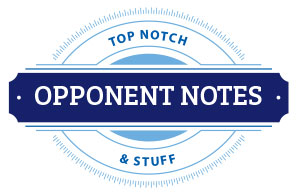 This is Rhode Island’s first NCAA Tournament appearance since 1999, when they were defeated 81-70 by Charlotte. The Rams advanced to the Elite Eight in 1998, toppling #1 seed Kansas in the second round and coming within two points of a Final Four when they lost 79-77 to Stanford in the Midwest Regional Final. Current Creighton assistant coach Preston Murphy was a key member of their 1997, 1998 and 1999 NCAA teams under head coach Jim Harrick, and when he graduated he ranked second in games played (128) at URI and third in 3-pointers made (181), and eighth in both career assists (322) and 3-point percentage (.380).
This is Rhode Island’s first NCAA Tournament appearance since 1999, when they were defeated 81-70 by Charlotte. The Rams advanced to the Elite Eight in 1998, toppling #1 seed Kansas in the second round and coming within two points of a Final Four when they lost 79-77 to Stanford in the Midwest Regional Final. Current Creighton assistant coach Preston Murphy was a key member of their 1997, 1998 and 1999 NCAA teams under head coach Jim Harrick, and when he graduated he ranked second in games played (128) at URI and third in 3-pointers made (181), and eighth in both career assists (322) and 3-point percentage (.380).- E.C. Matthews can be a streaky shooter, and the A-10 saw the “good” side of that in the conference tourney. He was 10-15 from three-point range over three games, including 4-4 against Davidson in the semis and 4-5 against VCU in the finals. He had 19 points and 9 rebounds in the final.
- 6’8″, 225-pound freshman Cyril Langevine had 10 rebounds, four points and two blocks in 24 minutes off the bench for the Rams in the title game. He’s played just 13 minutes per game for the season, averaging 3.2 points and 4.3 rebounds in that limited time.
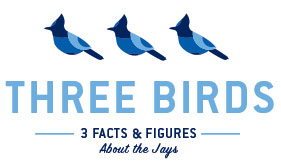 Four players on the Creighton team have been a part of an NCAA Tournament squad before, but only one of them has appeared for the Bluejays in the Big Dance. Fourth-year senior Zach Hanson played 13 minutes against Baylor in the 2014 NCAA Tournament, contributing two points and two rebounds. Fifth-year senior Isaiah Zierden has been part of two previous NCAA Tournament teams at Creighton, but did not play either time. He redshirted in 2012-13, and was out with a knee injury in 2013-14. And junior guard Marcus Foster played for Kansas State in the 2014 NCAA Tournament. Foster had 15 points and five assists in 39 minutes of a loss against Kentucky.
Four players on the Creighton team have been a part of an NCAA Tournament squad before, but only one of them has appeared for the Bluejays in the Big Dance. Fourth-year senior Zach Hanson played 13 minutes against Baylor in the 2014 NCAA Tournament, contributing two points and two rebounds. Fifth-year senior Isaiah Zierden has been part of two previous NCAA Tournament teams at Creighton, but did not play either time. He redshirted in 2012-13, and was out with a knee injury in 2013-14. And junior guard Marcus Foster played for Kansas State in the 2014 NCAA Tournament. Foster had 15 points and five assists in 39 minutes of a loss against Kentucky.- Creighton coach Greg McDermott is making his sixth postseason appearance at Creighton, and ninth overall as a Division I head coach when you include his time at Northern Iowa. McDermott’s Division I teams own a 9-9 record in eight previous postseason appearances, including a 9-6 mark in six appearances at Creighton. His nine postseason wins are two more than the next-best coach at CU, Dana Altman’s seven wins in 13 appearances.
- Creighton is making its 20th NCAA Tournament appearance, and 11th in the last 19 years. The Bluejays are 12-20 all-time in NCAA action, including a 9-10 record in its first game. Creighton owns an 8-11 record all-time in the Midwest Region, and have won at least one game in 6-of-10 previous Midwest Region appearances. Creighton’s first game in its last three Midwest Region games have been decided by an average of 2.0 points, with CU winning games by 4 points (2013), 1 point (2012) and 1 point (2002).
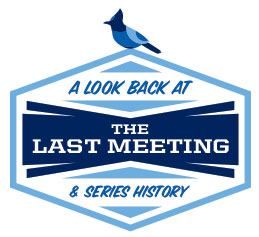 Creighton won the only previous meeting against the Rams, a 74-73 decision in the first round of the 2008 National Invitation Tournament. It’s a game we featured on Bluejay Rewind a couple of summers ago, and it’s one of the most improbable wins of the Altman Era (or any era, honestly).
Creighton won the only previous meeting against the Rams, a 74-73 decision in the first round of the 2008 National Invitation Tournament. It’s a game we featured on Bluejay Rewind a couple of summers ago, and it’s one of the most improbable wins of the Altman Era (or any era, honestly).
CU trailed 70-58 with 3:14 to play, and the writeup from Rewind takes the story from there:
“Over the next two minutes, the duo outscored URI 11-2, with Woodfox contributing a pair of three-pointers and Stinnett making a three and a nifty jumper. Woodfox’s second triple cut the deficit to 72-69 with 1:03 to play; on URI’s next possession, they worked as much clock as they could, but the shot they wound up with — a jumper by Baron — was rejected by Stinnett, who corralled his own block and raced downcourt. He found Witter streaking to the basket, and after a foul and two free throws, it was 72-71.
URI’s Marquis Jones would hit one of two at the line to return the lead to two with 11.5 seconds to play, setting up a final possession conundrum — to go for the tie or for the win? Creighton played for the win, and the first option for the winning shot went to Stinnett. He drew a double-team that left Witter wide open in the corner, and that’s where Witter buried his only field goal of the game, a three-pointer that gave Creighton their first lead since leading 3-0 at the outset.”

“But a large (literally) amount of attention this week will likely be paid to 7’0″ center Justin Patton. The true freshman is scoring 13.0 points per game while also averaging 6.2 rebounds and 1.5 blocks. This is the guy most Rhode Island basketball fans have been buzzing about since the Selection Show. Hassan Martin, Kuran Iverson, and Cyril Langevine have their work cut out for them against Patton.
But aside from the big man, it looks like Rhody matches up well against the Bluejays. Drawing a banged up team that’s below .500 in their last 15 games is certainly a blessing. Can the Rams take advantage?”
–“Bluejays Pose Interesting Challenge for Rhody”, RhodyRampage.com
Fun fact: The last time URI went dancing was in 1999, when a pre-Kardashian Lamar Odom buzzer beater won the A-10 Tournament title for the Rams to earn them the auto bid. Prior to this year, it was their only A-10 Tourney title.
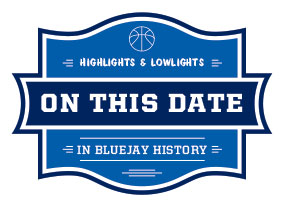 Creighton’s played on St. Patrick’s Day in the NCAA Tournament three times before, and they’re all terrible memories: an 85-69 loss to #6 Missouri on March 17, 1989, a 72-60 loss to #13 Illinois on March 17, 2002, and a 63-61 loss to West Virginia on March 17, 2005. Greg McDermott’s UNI Panthers lost an NCAA Tournament game on St. Patrick’s Day to Dayton in 2006 (54-49), too.
Creighton’s played on St. Patrick’s Day in the NCAA Tournament three times before, and they’re all terrible memories: an 85-69 loss to #6 Missouri on March 17, 1989, a 72-60 loss to #13 Illinois on March 17, 2002, and a 63-61 loss to West Virginia on March 17, 2005. Greg McDermott’s UNI Panthers lost an NCAA Tournament game on St. Patrick’s Day to Dayton in 2006 (54-49), too.
The Bluejays have actually won a game on March 17 — and it was an NCAA Tournament game, to boot — but you have to go all the way back to the 1962 NCAA Tournament to find it. Red McManus’ first team to earn an NCAA Tourney berth beat Memphis State in the first round, 87-83, and advanced to the second round where they met eventual national champ Cincinnati. In that game, Paul Silas picked up two fouls in the first 90 seconds and was held to a career-low seven rebounds. A 66-46 loss ended their hopes of advancing, but in those days there was a regional consolation game the following day. And so on March 17, 1962, the Bluejays defeated Texas Tech 63-61 in the NCAA Midwest Region Consolation Game.
The Jays trailed by two with 30 seconds left, but Herb Miller was fouled in the act of shooting and went to the line where he made two free throws to tie it. Their defense forced a turnover on the inbounds pass, and then Pete McManamon nailed a 20-footer with eight seconds left that wound up as the game-winner.
“It was a heart-throbbing finish, just like a lot of them we’ve won,” Coach McManus told the Omaha World-Herald after the game. “but a fitting climax for a team that wouldn’t give up.”
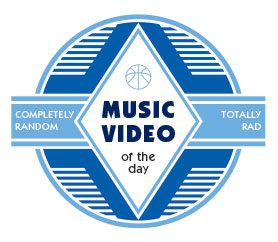 I’m superstitious as all get-out, and each of the last two trips to the NCAA Tournament I’ve put Van Halen’s “Dreams” here. And it’s worked; the Jays won both times. I’m not arguing.
I’m superstitious as all get-out, and each of the last two trips to the NCAA Tournament I’ve put Van Halen’s “Dreams” here. And it’s worked; the Jays won both times. I’m not arguing.

